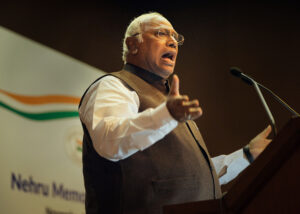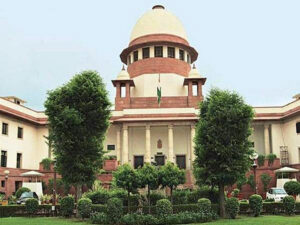New Delhi [India], May 6 (ANI): The Islamic State, also known as Daesh, with its roots in Iraq and Syria was founded by Abu Musab al-Zarqawi in 1999. The terrorist Islamist group, which follows the Salafi jihadist branch of Sunni Islam, gained global prominence in 2014 and rapidly spread its footprints in South Asia – the region with a large Muslim population.
A recent leaked document has revealed Islamic State using Afghanistan as its safe haven to operate and target important installations in Europe, Asia and the United States.
On April 21, 2019, when the people in Sri Lanka were celebrating Easter, a series of terrorist suicide bombings by the Islamic State shook the nation.
The coordinated attack at three churches and three luxury hotels in Colombo city killed a total of 269 people, including 45 foreign nationals.
On the 4th anniversary of the attack, Sri Lankans are still demanding justice and answers for the deadly Easter bombings.
Chandima Jayamali a widow who lost her husband in the attack while explaining her grief over the attacks that happened in Sri Lanka said that “god can hear our curses. Our cardinal and our priests are working to get justice, but it is sad to say that up to this date we have not received justice”.
In the recent past, deadly attacks by the Islamic State in South Asia, including Pakistan, Afghanistan and India, indicate the growing presence of ISIS in the region.
According to leaked Pentagon memos, ISIS is re-emerging in Afghanistan and plotting attacks across Europe, Asia and “aspirational plots” against the United States. Memos cited included specific targets that include churches, embassies and business centres.
Deepankar Sengupta an expert on South Asian Affairs while explaining the stability of the Taliban government said that “We may talk about ISIS’s targets in Afghanistan but when it comes to state stability, especially the stability of Taliban government, the Taliban government believes that these attacks do not disturb it at all. Yes, when they do attempt to attack the Taliban or the state of Afghanistan then the Taliban does take action and it takes severe action. So far what we have seen is a Jugalbandi (entwined twins) of sorts where ISIS keeps on targeting Shias largely and the Taliban is more or less comfortable with it.”
According to the Washington Post, which was the first to report, ISIS coordinated 15 specific plots from Afghanistan since the US withdrawal in 2021. The deadly suicide bomb at Kabul International Airport in August 2021 that killed 13 US Service members was set off by an ISIS member.
Abhijit Iyer Mitra an expert on South Asian Geopolitics while talking about ISIS said that “all power vacuums will always lead to this kind of terrorist organisation coming up, irrespective of where it is. America went in to block that power vacuum. After twenty years you know, losing the war, I mean what were they realistically men to do? They just can’t keep throwing troops and money into a war which is not going anywhere. So they had to kind of move out. I don’t think the power vacuum this time is as big as it was the last time. The last time, the Taliban literally allowed things to happen and that is why they lost their state”.
Experts believe that the withdrawal of US-led NATO forces from Afghanistan provided enough space for Islamic State to strengthen its footprints in the war-torn nation.
According to Stanford University, the Islamic State seeks to create a global Salafi-Jihadist movement, a religious political Sunni Islamist ideology. For the past few years, it has strengthened its footprints in South Asia and carried out several deadly attacks to register its presence.
Newlines Institute, a US-based think-tank says that ISIS in South Asia is concerned with recruiting for the Khorasan branch and thus seeks to leverage online networks and local politics to form cells and conduct sporadic attacks.
The group poses the greatest threat in Afghanistan and Pakistan, countries reeling from decades of wars, insurgency, weak governance, and political instability complicated by difficult topography.
Sengupta while commenting on the terror bombing said that “there is no doubt that poor governance in these two countries (Afghanistan and Pakistan) have created the necessary vacuums for not just ISIS but any fundamentalist groups basically to form and preach their version of a perfect world to disillusioned masses. But the centrality of Pakistan’s role in all this cannot be taken away. No matter which period, from the sixty’s to the ninety’s to the current page, Pakistan has been instrumental in creating disorder in Afghanistan.'”
The Islamic State has a massive presence in Pakistan’s Balochistan and Khyber Pakhtunkhwa province as they share borders with Afghanistan.
These provinces have witnessed frequent terror attacks by ISIS, as the outfit wants to establish its prominence in the region. In March, a suicide bombing by the Islamic State in the Sibbi area of Balochistan killed nine policemen.
Commenting on ISIS Iyer Mitra while commenting on the reason for the formation of terrorist organisations like ISIS said, “ISIS today, the way it stands is, anybody can start it up, anybody can claim to be ISIS. If you are violent enough and you are disruptive enough, you will get a sort of ISIS stamp of approval. This has been the pattern for quite some time now. Here of course we know that some of the elements are kind of independent radicals in Afghanistan but largely we have been able to trace a very significant Pakistani hand in this.”
According to Newlines Institute, the Islamic State Province of Pakistan (ISPP) was formed in May 2019 with the apparent goal of providing operational autonomy from the Khorasan branch and gathering various factions of Pakistan-based militant groups such as Tehrik-i-Taliban Pakistan, Lashkar-e-Jhangvi, Jaish-ul-Adl, Jundullah, and Jaish-ul Islam, thereby attracting recruits by channelling local interests.
The outfit is also found involved in carrying out terror attacks in Jammu and Kashmir, especially targeting the security forces.
The existence of the Islamic State in the region is a wake-up call as the outfit has already announced the Islamic State of Hind Province in May 2019. It indicates that the Islamist group may aim to launch a violent campaign when conditions are suitable.








